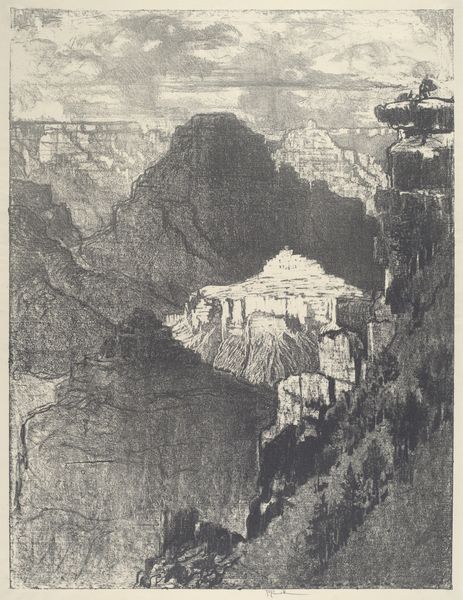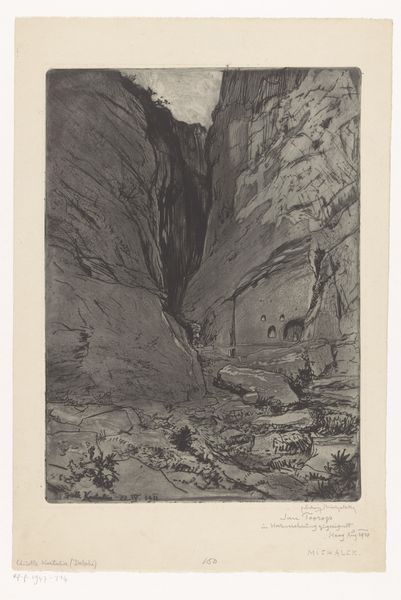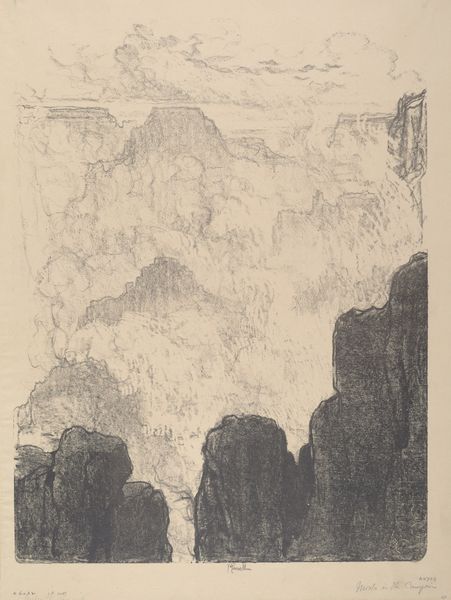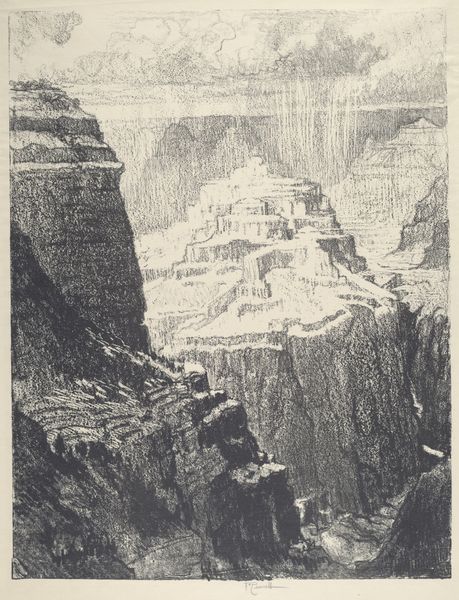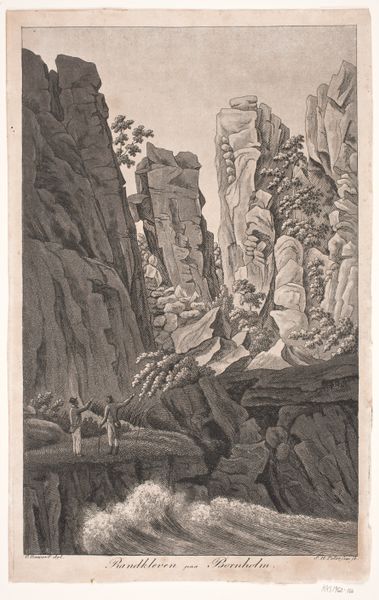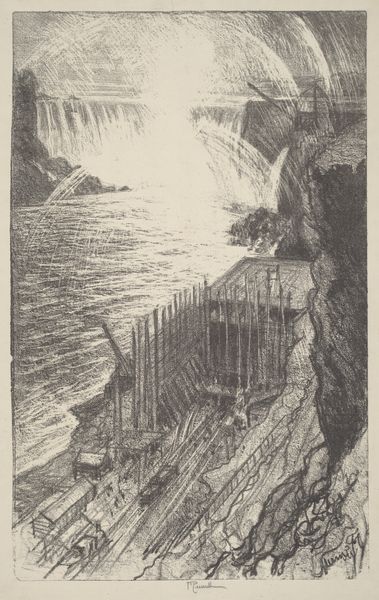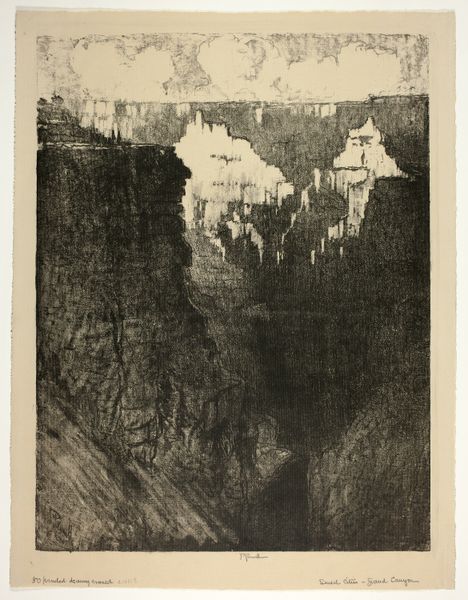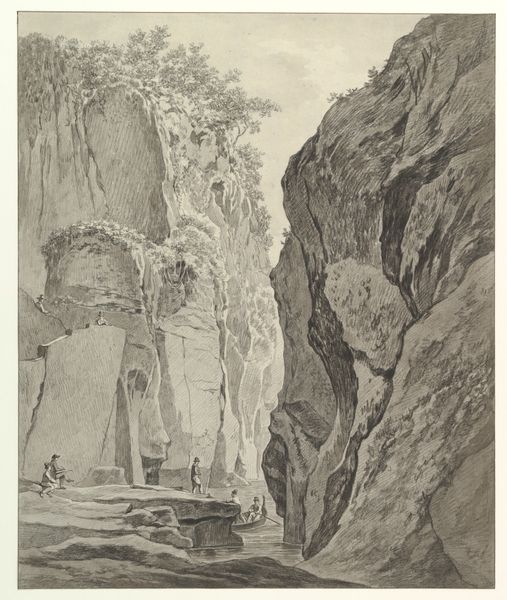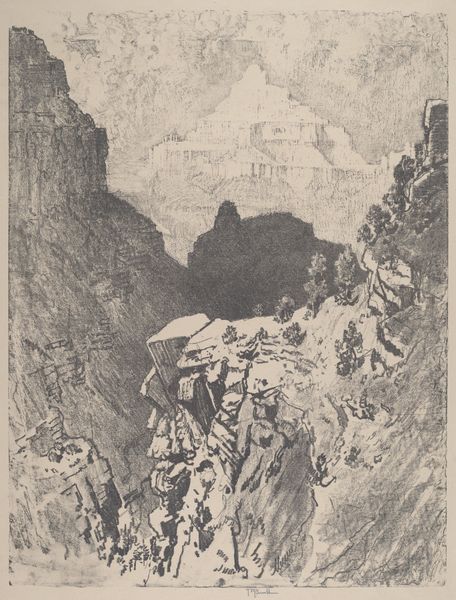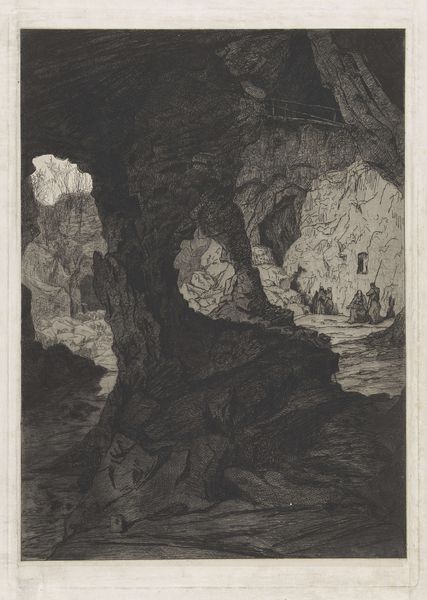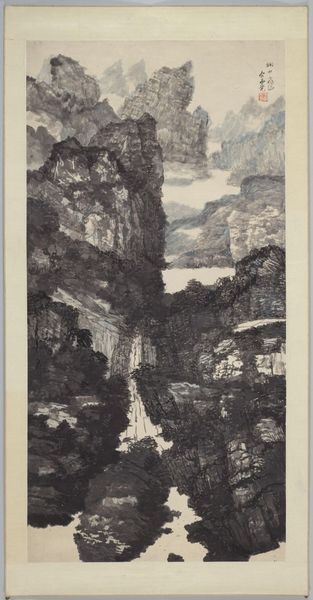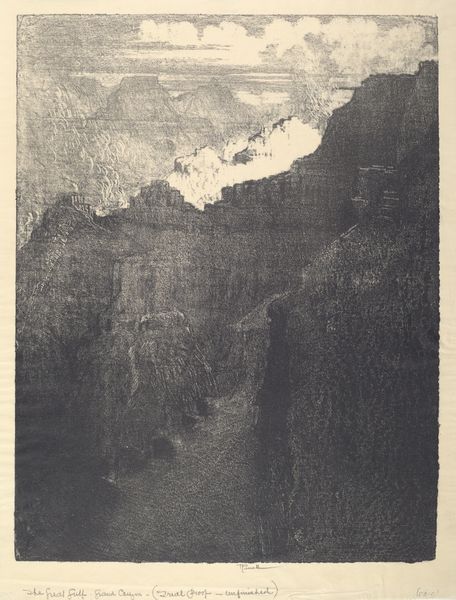
print, etching
# print
#
etching
#
landscape
#
geometric
Copyright: National Gallery of Art: CC0 1.0
Curator: Looking at this, my first thought is claustrophobia mixed with awe. The sheer scale is intimidating, but the way the light carves out details, it's like discovering hidden chambers. Editor: We're standing before Joseph Pennell's etching, "The Cathedral Door," from 1912. Pennell, as you know, was deeply fascinated by industry and architecture, and here we see him applying that sensibility to the natural world, in this case the Yosemite Valley. What interests me most is the process – the labor involved in creating these deep, shadowed lines to convey mass. Curator: Absolutely! It's almost reverential, like sketching a portrait of a titan. The etching mimics how we painstakingly record something that moves us beyond words, stroke by stroke. Do you feel that connection with nature's overwhelming presence? Editor: The medium – printmaking – immediately makes me consider reproduction, mass media, distribution, which I think counters any singular “presence” of nature. Pennell wasn't just trying to capture a romantic view of Yosemite; he was participating in the industrialized visual culture that popularized the American landscape to an urban audience hungry for escapism. Curator: True, it's mediated, and that's what makes it art instead of simply nature! It’s that layer of interpretation, the humanity trying to grapple with something inhumanly grand. It isn't really about pure escape, I think. Editor: The lines themselves seem to excavate the history held within the landscape; notice the sharp angles, the contrasts between light and dark, and consider how he emphasizes the almost violent natural processes like erosion in material transformation across geological time. The final product we’re looking at relies just as much on human intervention as any other architectural structure! Curator: So, in the end, both viewpoints, though at odds, really converge: we see architecture in nature because we humans can’t resist framing the world with our perspective, etching into its essence what we seek—a mirror to our dreams, and fears too. Editor: Exactly! The history of our consumption, as you said at the beginning. A pretty useful thing to contemplate for a minute or two.
Comments
No comments
Be the first to comment and join the conversation on the ultimate creative platform.
